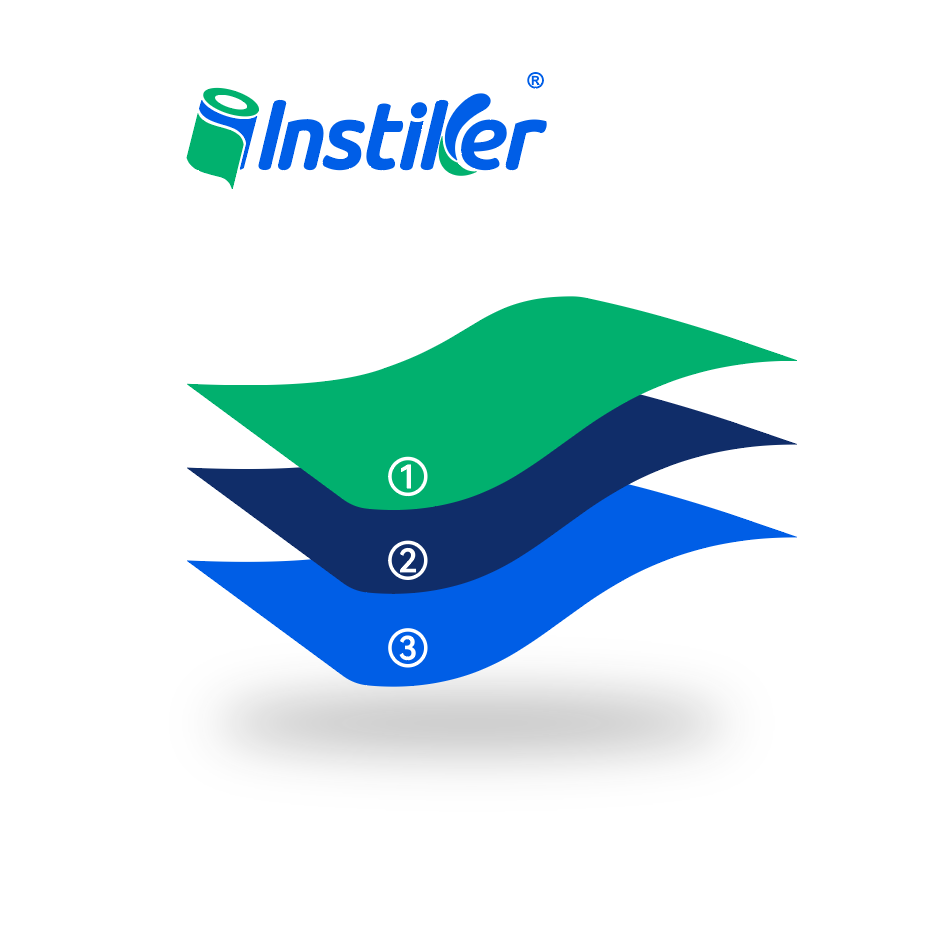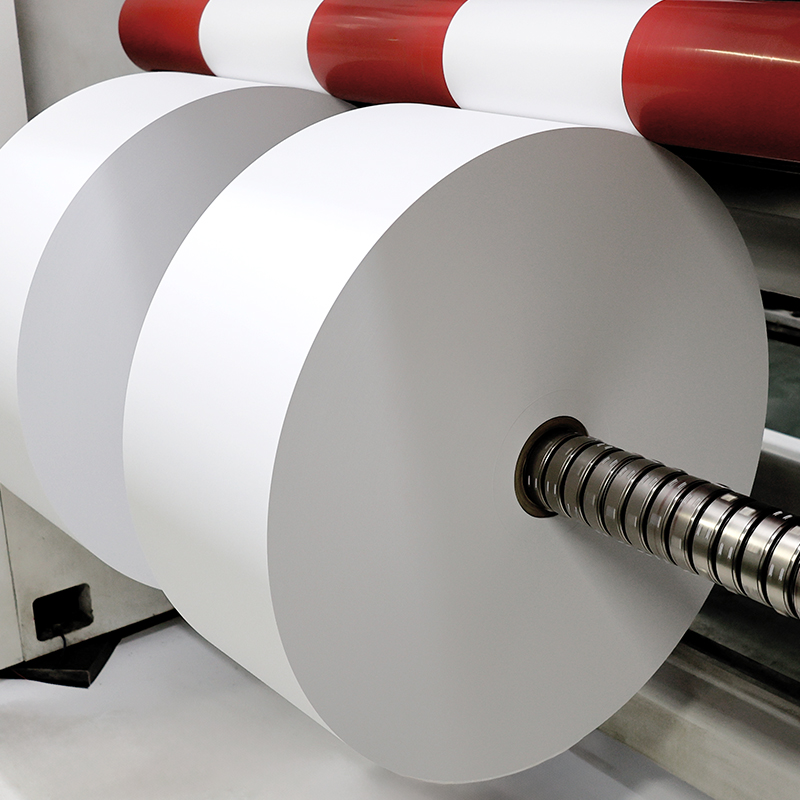Email:
Tel:
+86-18023461748
378 Maxin Road , Zhongluotan Town ,
Baiyun District , Guangzhou City China













YH20492
Instiker
| Color: | |
|---|---|
| Size: | |
| Material: | |
| Application: | |
| Availability: | |
| Quantity: | |

Product Name: 60μ Gloss White PP Acrylic 30μ PET
1. Face Stock: Gloss White PP
Caliper (μm): 60±5% GB/T 451.3-2003
Weight (g/㎡): 42±5% GB/T 451.2-2002
2. Adhesive Performance: Acrylic
Initial Adhesion (N): 12.99 FTM 9
20 min.180'Peel Adhesion (N/25mm) : 6.75/6.76 FTM 1
20 min.90'Peel Adhesion (N/25mm): 8.74 FTM 2
Storage Temperature: -15°C to 70°C
Minimum Lakelling Temperature: 10°C
3. Liner: PET
Caliper (μm): 30±5% GB/T 451.3-2003
Weight (g/㎡): 41±5% GB/T 451.3-2003
It can be stored for 1 year at the temperature of 23+2°C and relative humidity of 50+5%
It is widely used in bar code printing and normal printing, die-cutting performance is excel-White Glassine lent. Excellent performance on many packaging materials.
It is widely used in various printing processes. Attention should be paid to controlling the viscosity of the ink to avoid the loss of the coating caused by over-viscous ink. Avoid exces-sive rewinding tension, which may cause label glue overflow. Simple text printing and bar code printing are recommended.
* Food and daily chemical Labels:
- High-gloss labels for dairy product bottles (such as yogurt cup lids), resistant to low-temperature refrigeration;
- Labels for shampoo bottles, enhancing shelf appeal with high gloss.
* Promotion Labels:
- Shiny stickers for limited-edition products, combined with hot stamping technology;
- Labels for electronics promotion activities (such as "New Product Launch" high-gloss stickers).
* Limitations: The high-gloss surface tends to leave fingerprints and needs to be used with an anti-fouling coating.
Q: Is this label fully recyclable?
A: Yes, the synthetic face stock and recycled kraft liner are both recyclable in plastic and paper streams, respectively. Remove adhesive residue before recycling.
Q: Can it be composted?
A: The face stock and adhesive are certified for industrial composting (OK Compost Industrial), breaking down into organic matter within 12 weeks under controlled conditions.
Q: How does it compare to traditional paper labels in wet environments?
A: The synthetic fibers repel water, making it 300% more moisture-resistant than kraft or paper labels, ideal for refrigerated or outdoor applications.
Q: Does the eco-friendly adhesive affect bonding strength?
A: No, the plant-based adhesive matches the performance of traditional acrylic adhesives, with a peel adhesion of 10N/25mm on stainless steel, ensuring reliable substrate bonding.



Product Name: 60μ Gloss White PP Acrylic 30μ PET
1. Face Stock: Gloss White PP
Caliper (μm): 60±5% GB/T 451.3-2003
Weight (g/㎡): 42±5% GB/T 451.2-2002
2. Adhesive Performance: Acrylic
Initial Adhesion (N): 12.99 FTM 9
20 min.180'Peel Adhesion (N/25mm) : 6.75/6.76 FTM 1
20 min.90'Peel Adhesion (N/25mm): 8.74 FTM 2
Storage Temperature: -15°C to 70°C
Minimum Lakelling Temperature: 10°C
3. Liner: PET
Caliper (μm): 30±5% GB/T 451.3-2003
Weight (g/㎡): 41±5% GB/T 451.3-2003
It can be stored for 1 year at the temperature of 23+2°C and relative humidity of 50+5%
It is widely used in bar code printing and normal printing, die-cutting performance is excel-White Glassine lent. Excellent performance on many packaging materials.
It is widely used in various printing processes. Attention should be paid to controlling the viscosity of the ink to avoid the loss of the coating caused by over-viscous ink. Avoid exces-sive rewinding tension, which may cause label glue overflow. Simple text printing and bar code printing are recommended.
* Food and daily chemical Labels:
- High-gloss labels for dairy product bottles (such as yogurt cup lids), resistant to low-temperature refrigeration;
- Labels for shampoo bottles, enhancing shelf appeal with high gloss.
* Promotion Labels:
- Shiny stickers for limited-edition products, combined with hot stamping technology;
- Labels for electronics promotion activities (such as "New Product Launch" high-gloss stickers).
* Limitations: The high-gloss surface tends to leave fingerprints and needs to be used with an anti-fouling coating.
Q: Is this label fully recyclable?
A: Yes, the synthetic face stock and recycled kraft liner are both recyclable in plastic and paper streams, respectively. Remove adhesive residue before recycling.
Q: Can it be composted?
A: The face stock and adhesive are certified for industrial composting (OK Compost Industrial), breaking down into organic matter within 12 weeks under controlled conditions.
Q: How does it compare to traditional paper labels in wet environments?
A: The synthetic fibers repel water, making it 300% more moisture-resistant than kraft or paper labels, ideal for refrigerated or outdoor applications.
Q: Does the eco-friendly adhesive affect bonding strength?
A: No, the plant-based adhesive matches the performance of traditional acrylic adhesives, with a peel adhesion of 10N/25mm on stainless steel, ensuring reliable substrate bonding.


Gloss white PP self-adhesive is a self-adhesive material with polypropylene (PP) as the base material. Through special processes, pearlescent pigments (such as titanium dioxide coating mica powder) are added to the film layer or multi-layer co-extrusion technology is adopted to make the material surface present a pearlescent luster effect. It combines the physical properties of PP material with the optical characteristics of pearlescent pigments, and is both decorative and practical. It is often used in labels, packaging or advertising scenarios that require visual texture.
The acrylic adhesive provides a strong and reliable bond. It adheres well to a wide range of surfaces, including plastic, metal, and cardboard. This adhesive is resistant to environmental factors such as humidity and moderate temperature changes, ensuring that the labels stay firmly in place over time.
PET liner refers to self-adhesive liner made from Polyethylene Terephthalate (PET for short) as the base material, and it belongs to a type of plastic liner. It is usually used as the supporting material for self-adhesive labels, for carrying face materials (such as label paper, film, etc.) and adhesives, and can be peeled off and discarded when the labels are in use.

Gloss white PP self-adhesive is a self-adhesive material with polypropylene (PP) as the base material. Through special processes, pearlescent pigments (such as titanium dioxide coating mica powder) are added to the film layer or multi-layer co-extrusion technology is adopted to make the material surface present a pearlescent luster effect. It combines the physical properties of PP material with the optical characteristics of pearlescent pigments, and is both decorative and practical. It is often used in labels, packaging or advertising scenarios that require visual texture.
The acrylic adhesive provides a strong and reliable bond. It adheres well to a wide range of surfaces, including plastic, metal, and cardboard. This adhesive is resistant to environmental factors such as humidity and moderate temperature changes, ensuring that the labels stay firmly in place over time.
PET liner refers to self-adhesive liner made from Polyethylene Terephthalate (PET for short) as the base material, and it belongs to a type of plastic liner. It is usually used as the supporting material for self-adhesive labels, for carrying face materials (such as label paper, film, etc.) and adhesives, and can be peeled off and discarded when the labels are in use.

The surface has a special coating and can be used for various printing methods such as letterpress, flexographic, gravure and screen printing. It has excellent hot stamping performance and effect. It is suitable for UV ink and water-based ink. Avoid printing on the edge of the label,especially screen UV ink and UV varnish. The high shrinkage ink layer will cause the label to curl,resulting in separation from the release paper or warping on the object being attached.
The surface has a special coating and can be used for various printing methods such as letterpress, flexographic, gravure and screen printing. It has excellent hot stamping performance and effect. It is suitable for UV ink and water-based ink. Avoid printing on the edge of the label,especially screen UV ink and UV varnish. The high shrinkage ink layer will cause the label to curl,resulting in separation from the release paper or warping on the object being attached.